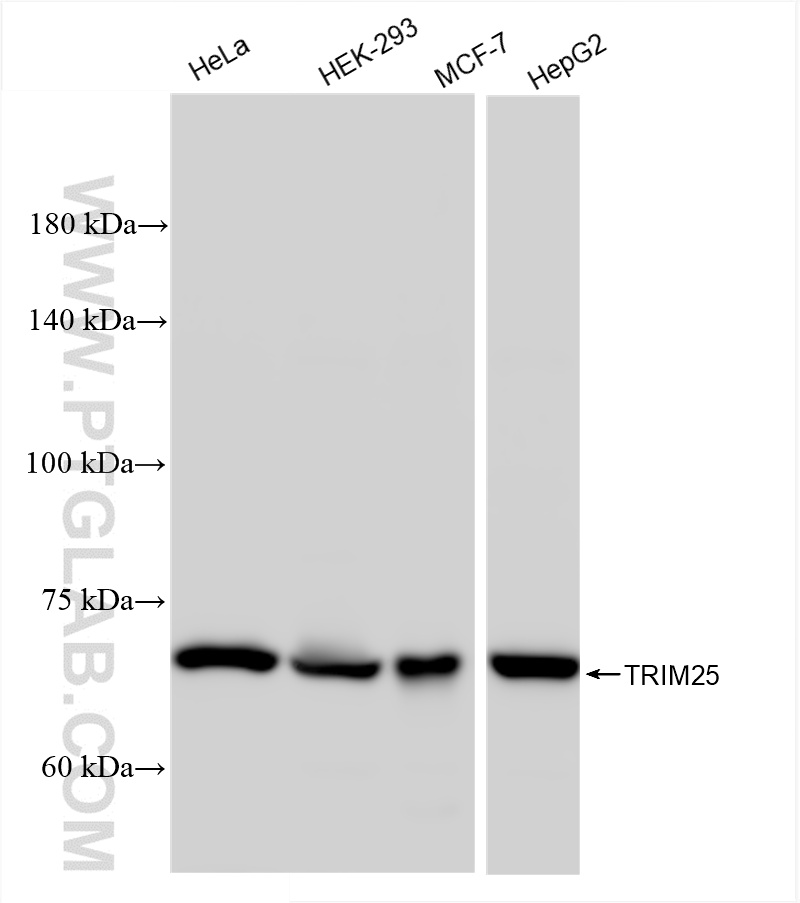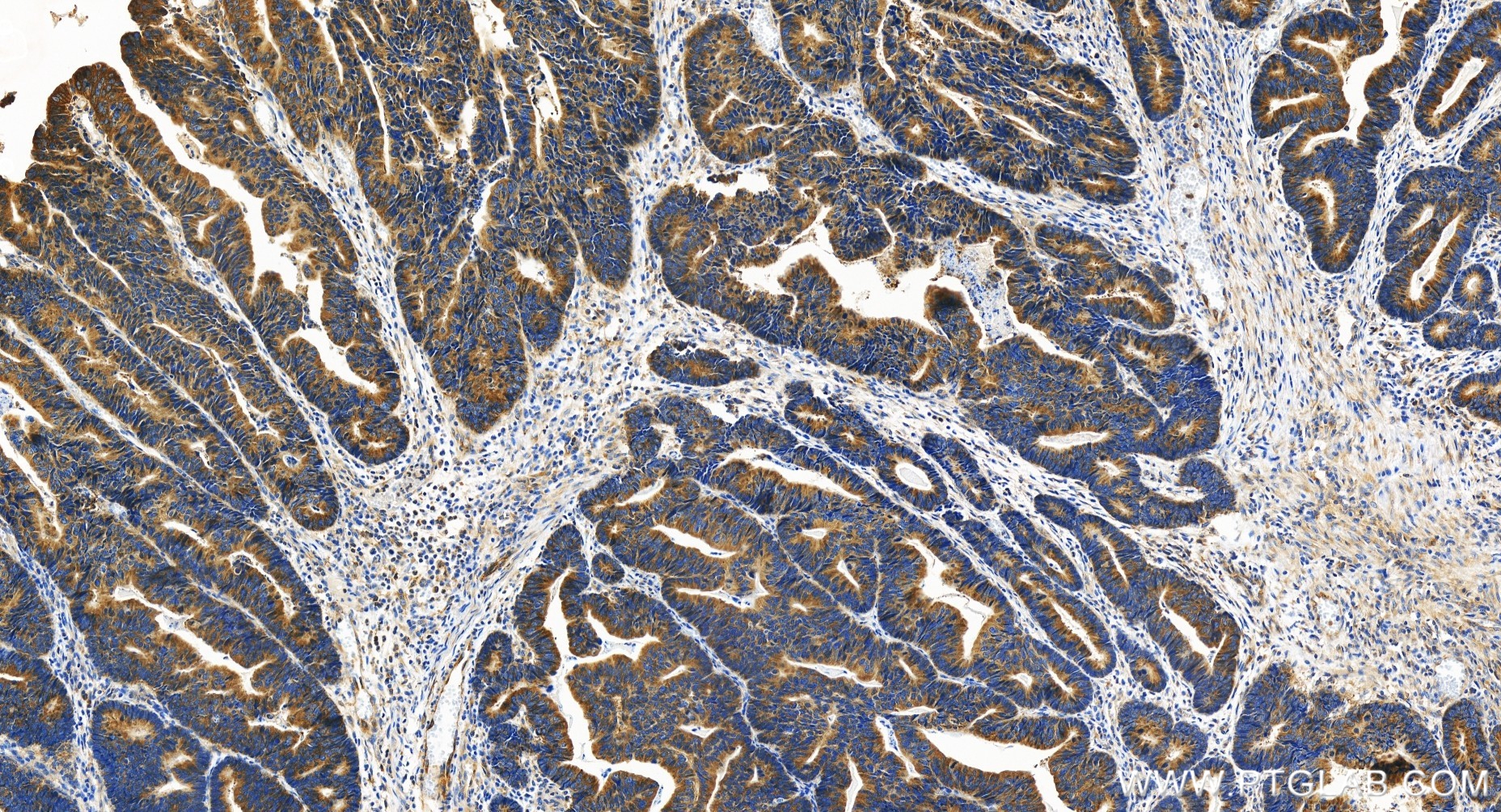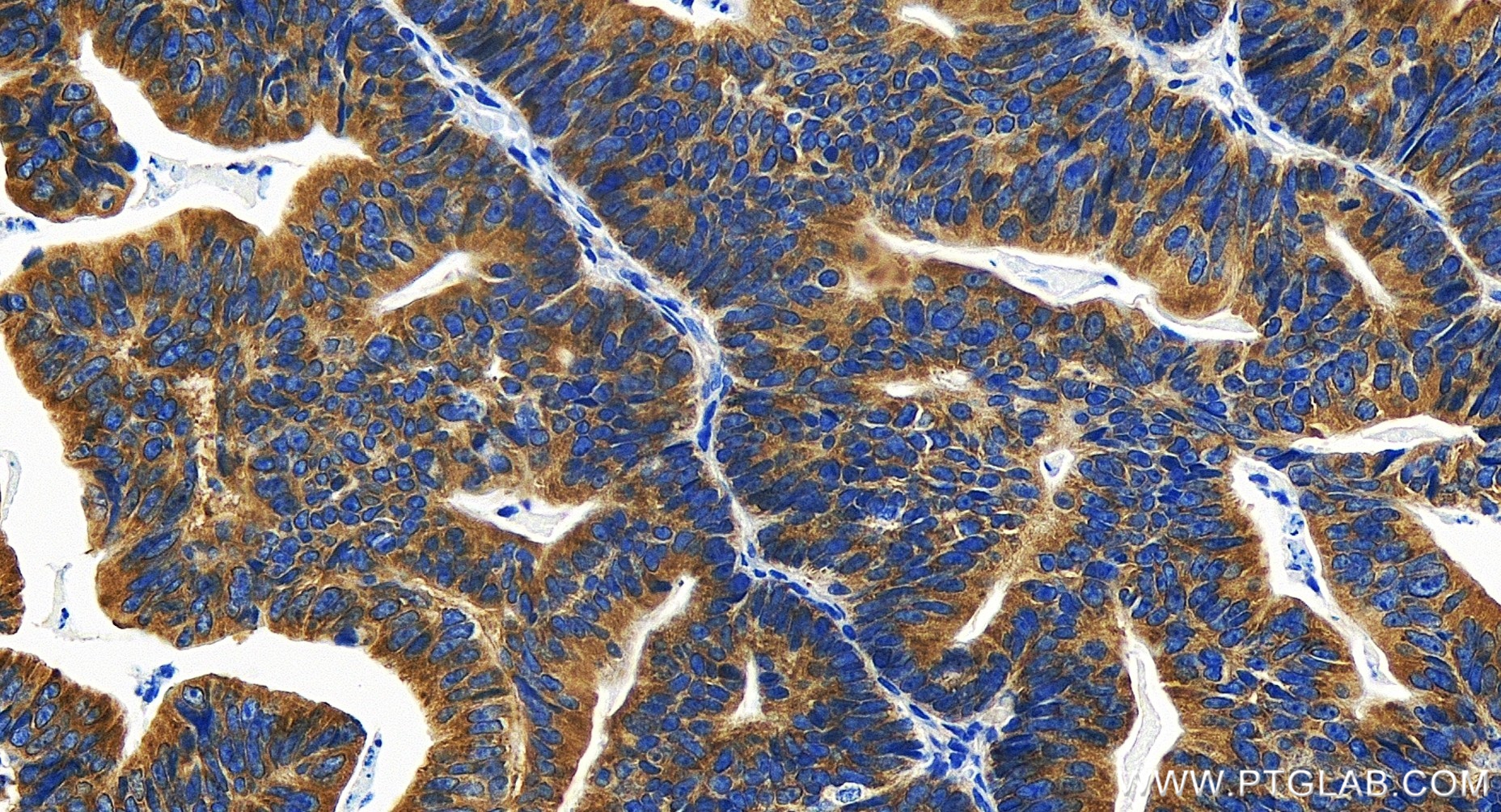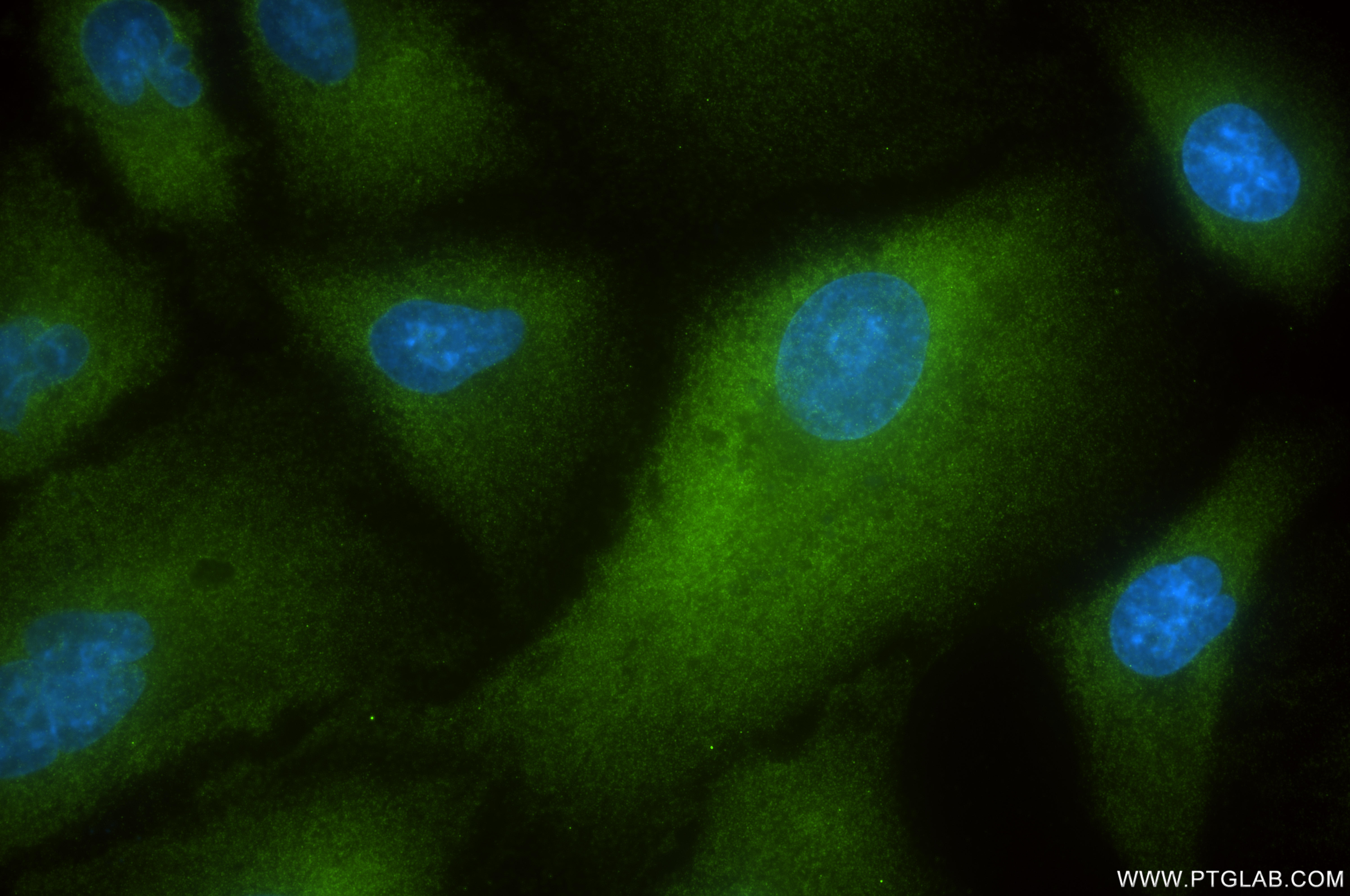验证数据展示
经过测试的应用
| Positive WB detected in | HeLa cells, HEK-293 cells, MCF-7 cells, HepG2 cells |
| Positive IHC detected in | human colon cancer tissue Note: suggested antigen retrieval with TE buffer pH 9.0; (*) Alternatively, antigen retrieval may be performed with citrate buffer pH 6.0 |
| Positive IF/ICC detected in | A549 cells |
推荐稀释比
| 应用 | 推荐稀释比 |
|---|---|
| Western Blot (WB) | WB : 1:2000-1:10000 |
| Immunohistochemistry (IHC) | IHC : 1:50-1:500 |
| Immunofluorescence (IF)/ICC | IF/ICC : 1:200-1:800 |
| It is recommended that this reagent should be titrated in each testing system to obtain optimal results. | |
| Sample-dependent, Check data in validation data gallery. | |
产品信息
85919-1-RR targets TRIM25 in WB, IHC, IF/ICC, ELISA applications and shows reactivity with human samples.
| 经测试应用 | WB, IHC, IF/ICC, ELISA Application Description |
| 经测试反应性 | human |
| 免疫原 |
CatNo: Ag29325 Product name: Recombinant human TRIM25 protein Source: e coli.-derived, PET28a Tag: 6*His Domain: 298-630 aa of BC016924 Sequence: SLTKRDEFEFLEKASKLRGISTKPVYIPEVELNHKLIKGIHQSTIDLKNELKQCIGRLQELTPSSGDPGEHDPASTHKSTRPVKKVSKEEKKSKKPPPVPALPSKLPTFGAPEQLVDLKQAGLEAAAKATSSHPNSTSLKAKVLETFLAKSRPELLEYYIKVILDYNTAHNKVALSECYTVASVAEMPQNYRPHPQRFTYCSQVLGLHCYKKGIHYWEVELQKNNFCGVGICYGSMNRQGPESRLGRNSASWCVEWFNTKISAWHNNVEKTLPSTKATRVGVLLNCDHGFVIFFAVADKVHLMYKFRVDFTEALYPAFWVFSAGATLSICSPK 种属同源性预测 |
| 宿主/亚型 | Rabbit / IgG |
| 抗体类别 | Recombinant |
| 产品类型 | Antibody |
| 全称 | tripartite motif-containing 25 |
| 别名 | EC:2.3.2.27, EC:6.3.2.n3, EFP, Estrogen-responsive finger protein, RING-type E3 ubiquitin transferase |
| 计算分子量 | 630 aa, 71 kDa |
| 观测分子量 | 71 kDa |
| GenBank蛋白编号 | BC016924 |
| 基因名称 | TRIM25 |
| Gene ID (NCBI) | 7706 |
| 偶联类型 | Unconjugated |
| 形式 | Liquid |
| 纯化方式 | Protein A purification |
| UNIPROT ID | Q14258 |
| 储存缓冲液 | PBS with 0.02% sodium azide and 50% glycerol, pH 7.3. |
| 储存条件 | Store at -20°C. Stable for one year after shipment. Aliquoting is unnecessary for -20oC storage. |
背景介绍
TRIM25 (tripartite motif-containing 25) is also named as EFP, Z147, ZNF147, RNF147 and belongs to the zinc finger protein family and tripartite motif (TRIM) family. It induces the Lys63-linked ubiquitination of RIG-I, which is crucial for the cytosolic RIG-I signalling pathway to elicit host antiviral innate immunity(PMID:17392790). It is also essential not only for DDX58 ubiquitination but also for DDX58-mediated interferon-production and antiviral activity in response to RNA virus infection(PMID: 17392790). TRIM25 can be detected in both the cytoplasmic and nuclear (PMID: 33966039).
实验方案
| Product Specific Protocols | |
|---|---|
| IF protocol for TRIM25 antibody 85919-1-RR | Download protocol |
| IHC protocol for TRIM25 antibody 85919-1-RR | Download protocol |
| WB protocol for TRIM25 antibody 85919-1-RR | Download protocol |
| Standard Protocols | |
|---|---|
| Click here to view our Standard Protocols |





